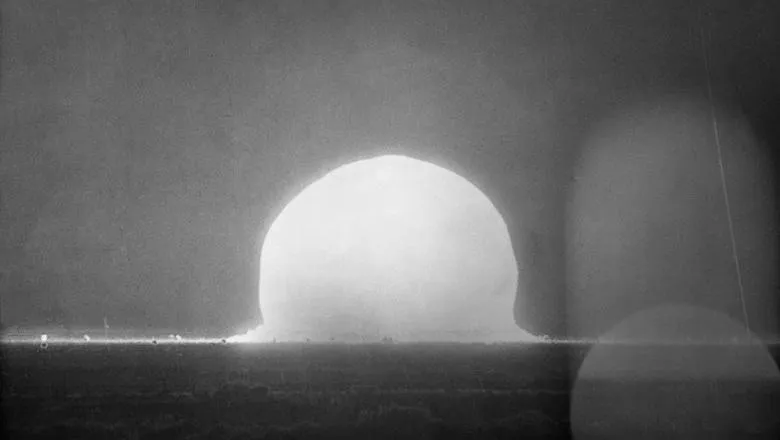‘It was a particular pleasure to mark this significant anniversary by welcoming Alan Carr, who is the historian at the Los Alamos National Laboratory where the Trinity device was designed and built.’
Richard Moore, Visiting Senior Research Fellow at the Centre for Science and Security Studies.
01 October 2020
Virtual conference marks key moments in nuclear history
This year, ‘Charterhouse-on-air’ successfully showcased milestones and current research in nuclear history.

The Centre for Science and Security (CSSS) at King’s College London (KCL) supported the organisation of the first online version of the Charterhouse Nuclear History Conference, gathering experts from the UK and beyond to mark historical milestones and talk about some of the most fascinating aspects of nuclear history.
From sessions on bomb ballistics testing to nuclear safety in maritime salvage operations, the conference marked the 75th anniversary of the first nuclear test, 50 years of the Non-Proliferation Treaty and took the audience on a virtual visit of the Orford Ness National Trust site and research centre.
The conference is usually held every two years within the informal surroundings of Charterhouse School in Surrey. For every edition, the programme covers diverse aspects of nuclear history. Experts mainly interact with an academic audience to discuss their unique perspectives on the subject matter.
Due to Covid-19 restrictions, the event took on an online format, comprising of 11 webinars held for one week in July. Richard Moore, Visiting Senior Research Fellow at CSSS who moderated the sessions and put together the programme, said: ‘In recent years, we’ve been able to welcome participants from overseas to widen our perspective still further. In this sense, this year is no different. It was great to welcome so many people from different backgrounds.’
The event began with a welcome session that explored the Orford Ness National Trust site virtually using 3D fly-through imagery produced by an Independent Research Group led by founding members Barry Searle and David Warren. They are developing new research on 1960s nuclear test detection with over-the-horizon radar.
One of the main conference highlights was a presentation on Project Trinity, the first nuclear test that took place on 16 July 1945. Alongside this, a global panel of speakers from Japan and the United Kingdom connected across time zones to highlight the 50th anniversary of non-proliferation regime. Yoko Iwama (Graduate Institute for Policy Studies in Tokyo) and Jonathan Hunt (Southampton University) discussed the roles of the neutral and non-aligned states. Hassan Elbahtimy (CSSS and the Department of War Studies) added his review of the history of the Non-Proliferation Treaty.
Aside from the historical milestones, Bill Nuttall, Professor of Energy at the Open University put the spotlight on German and US wartime programmes, with a special focus on the evidence of uranium enrichment in Nazi Germany. Steve Papworth, formerly of British Nuclear Fuel Limited, and Bridget Kennedy of Goldsmith’s College gave contrasting historical and cultural perspectives on Sellafield.
Geoffrey Chapman and Alan Jackson showcased the quality of KCL’s own research on British nuclear weapons history. Wayne Cocroft (Historic England) introduced the nuclear heritage preservation aspect alongside Egle Rindzeviciute who gave a fascinating account of her research at nuclear heritage sites in Russia.
Lastly, John Walker, recently retired from the FCO Arms Control and Disarmament Research Unit, and Tom Ramos from the Lawrence Livermore National Laboratory gave splendid closing keynotes.
The programme especially sought to balance the pro- and anti-nuclear perspectives, and according to Moore it was pleasing to get this feedback from a UK artist attendee: “I come from a sort of anti-nuclear background and I found the neutral atmosphere both refreshing and personally slightly conflicting. The measured atmosphere allowed more freedom for participants to deliver their stories. I have always had a love hate relationship with the subject matter. This tension is fascinating and something I use a lot in my work.”
